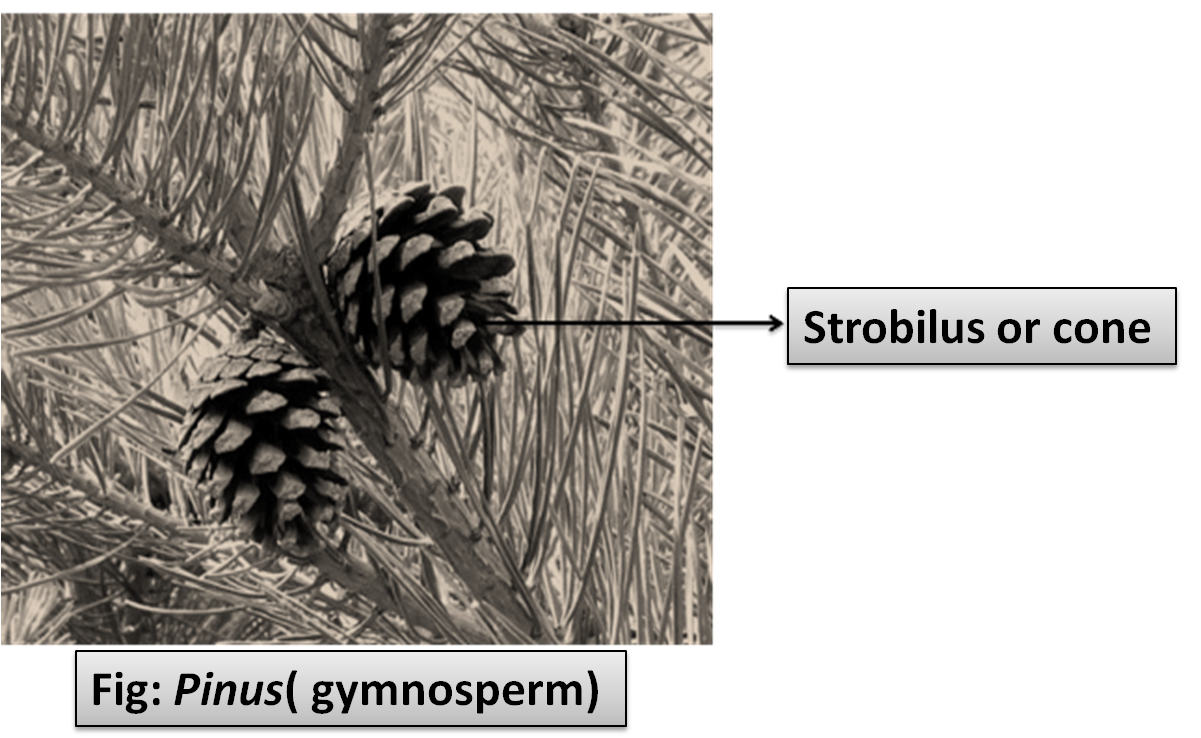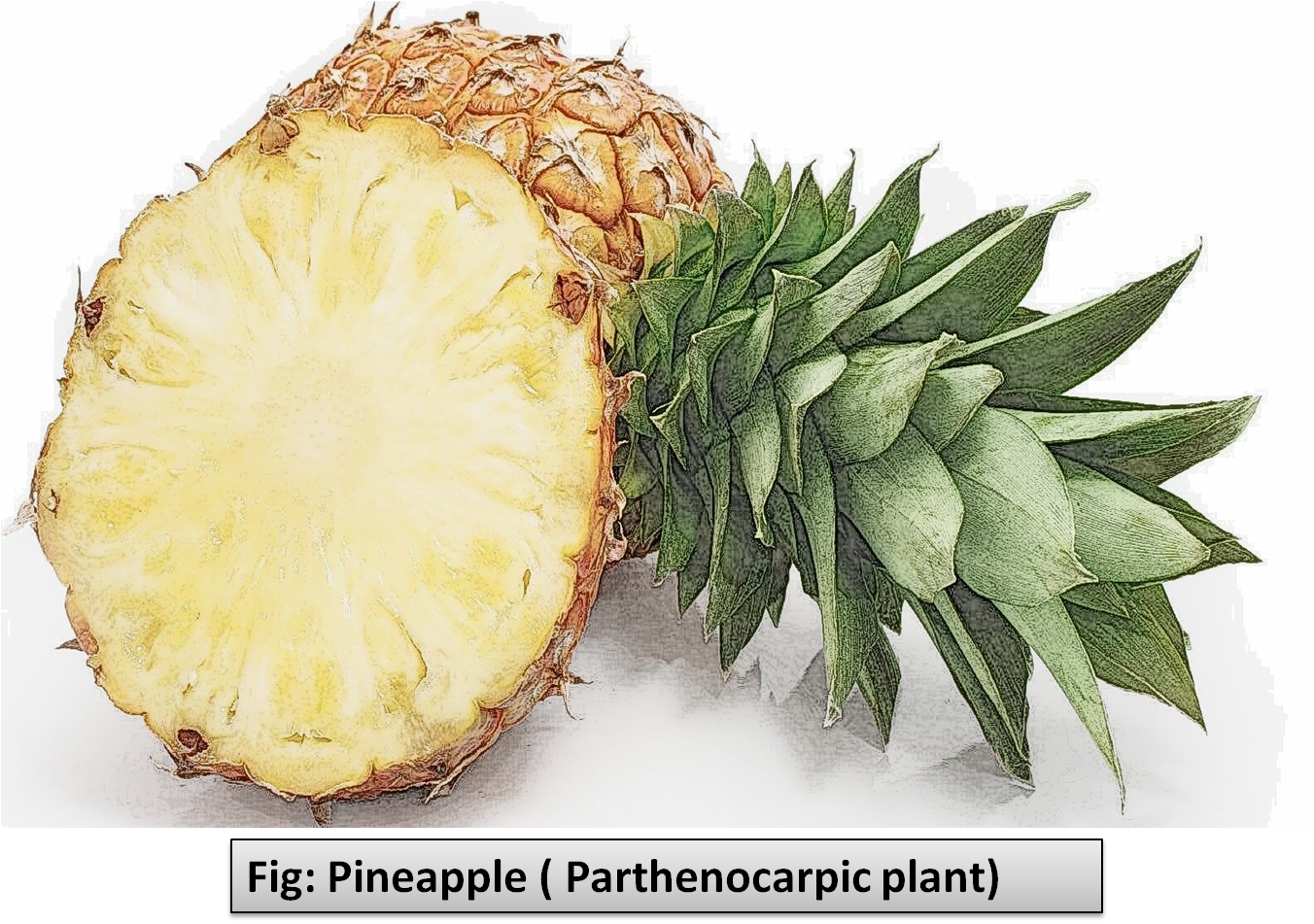
Name a plant that forms seeds but no fruits and another plant that forms fruits but no seeds.
Answer
519.3k+ views
1 likes
Hint: A scientist divided the plant kingdom into two sub-kingdoms mainly based on the presence or absence of seeds in 1883. The sub-kingdom which can produce seeds are further divided based on whether they flower or not.
Complete answer:
Eichler in 1883 divided the plant kingdom into Cryptogams and Phanerogamae. Lower plants in which sex organs are hidden and seeds and flowers are absent were grouped under Cryptogamae. It includes thallophytes(algae), bryophytes, and pteridophytes. Phanerogamae is subkingdom for the higher plants in which sex organs are evident and seeds are present. It included gymnosperms and angiosperms. Phanerogamae is further divided into non-flowering plants i.e gymnosperms and flowering plants i.e angiosperms. Thus, Gymnosperms are the plants that form seeds but not fruits. E.g. Cycas, Pinus, Cedrus. Parthenocarpic plants are angiosperms that form fruits but no seeds. E.g. Banana, Pineapple.
Additional Information:
In ‘Gymnosperm’, an ovary wall does not enclose ovules and they remain exposed, both before and after fertilization. Remember, after fertilization, the ovules develop into seeds, the ovary develops into fruit, and the ovary wall into the fruit wall. But, in gymnosperms, after fertilization, the seeds developed from the ovule, are not covered i.e. are naked. Seeds are exposed to modified leaves known as sporophylls forming cones or strobili. Thus gymnosperms are fruitless plants.

Parthenocarpic plants undergo parthenocarpy which is defined as the formation of fruits without fertilization. One male gamete fuses with an egg cell while the other fuses with two polar nuclei. This process is called double fertilization which is unique to angiosperms. In parthenocarpic plants, however, the fruit develops from the ovary without double fertilization. Thus, parthenocarpic plants are also known as seedless plants. E.g: Banana, Fig, and Pineapple
Note: Reasons for parthenocarpy includes :
-Pollination failure, or nonfunctional eggs or pollen grains.
-Chromosomal imbalance such as in Banana which has a triploid set of chromosomes as opposed to a diploid set of chromosomes.

Complete answer:
Eichler in 1883 divided the plant kingdom into Cryptogams and Phanerogamae. Lower plants in which sex organs are hidden and seeds and flowers are absent were grouped under Cryptogamae. It includes thallophytes(algae), bryophytes, and pteridophytes. Phanerogamae is subkingdom for the higher plants in which sex organs are evident and seeds are present. It included gymnosperms and angiosperms. Phanerogamae is further divided into non-flowering plants i.e gymnosperms and flowering plants i.e angiosperms. Thus, Gymnosperms are the plants that form seeds but not fruits. E.g. Cycas, Pinus, Cedrus. Parthenocarpic plants are angiosperms that form fruits but no seeds. E.g. Banana, Pineapple.
Additional Information:
In ‘Gymnosperm’, an ovary wall does not enclose ovules and they remain exposed, both before and after fertilization. Remember, after fertilization, the ovules develop into seeds, the ovary develops into fruit, and the ovary wall into the fruit wall. But, in gymnosperms, after fertilization, the seeds developed from the ovule, are not covered i.e. are naked. Seeds are exposed to modified leaves known as sporophylls forming cones or strobili. Thus gymnosperms are fruitless plants.

Parthenocarpic plants undergo parthenocarpy which is defined as the formation of fruits without fertilization. One male gamete fuses with an egg cell while the other fuses with two polar nuclei. This process is called double fertilization which is unique to angiosperms. In parthenocarpic plants, however, the fruit develops from the ovary without double fertilization. Thus, parthenocarpic plants are also known as seedless plants. E.g: Banana, Fig, and Pineapple
Note: Reasons for parthenocarpy includes :
-Pollination failure, or nonfunctional eggs or pollen grains.
-Chromosomal imbalance such as in Banana which has a triploid set of chromosomes as opposed to a diploid set of chromosomes.

Latest Vedantu courses for you
Grade 8 | CBSE | SCHOOL | English
Vedantu 8 CBSE Pro Course - (2025-26)
School Full course for CBSE students
₹45,300 per year
Recently Updated Pages
Master Class 11 Business Studies: Engaging Questions & Answers for Success

Master Class 11 Economics: Engaging Questions & Answers for Success

Master Class 11 Accountancy: Engaging Questions & Answers for Success

Master Class 11 Computer Science: Engaging Questions & Answers for Success

Master Class 11 English: Engaging Questions & Answers for Success

Master Class 11 Maths: Engaging Questions & Answers for Success

Trending doubts
Which one is a true fish A Jellyfish B Starfish C Dogfish class 11 biology CBSE

Difference Between Prokaryotic Cells and Eukaryotic Cells

1 ton equals to A 100 kg B 1000 kg C 10 kg D 10000 class 11 physics CBSE

1 Quintal is equal to a 110 kg b 10 kg c 100kg d 1000 class 11 physics CBSE

One Metric ton is equal to kg A 10000 B 1000 C 100 class 11 physics CBSE

How much is 23 kg in pounds class 11 chemistry CBSE




